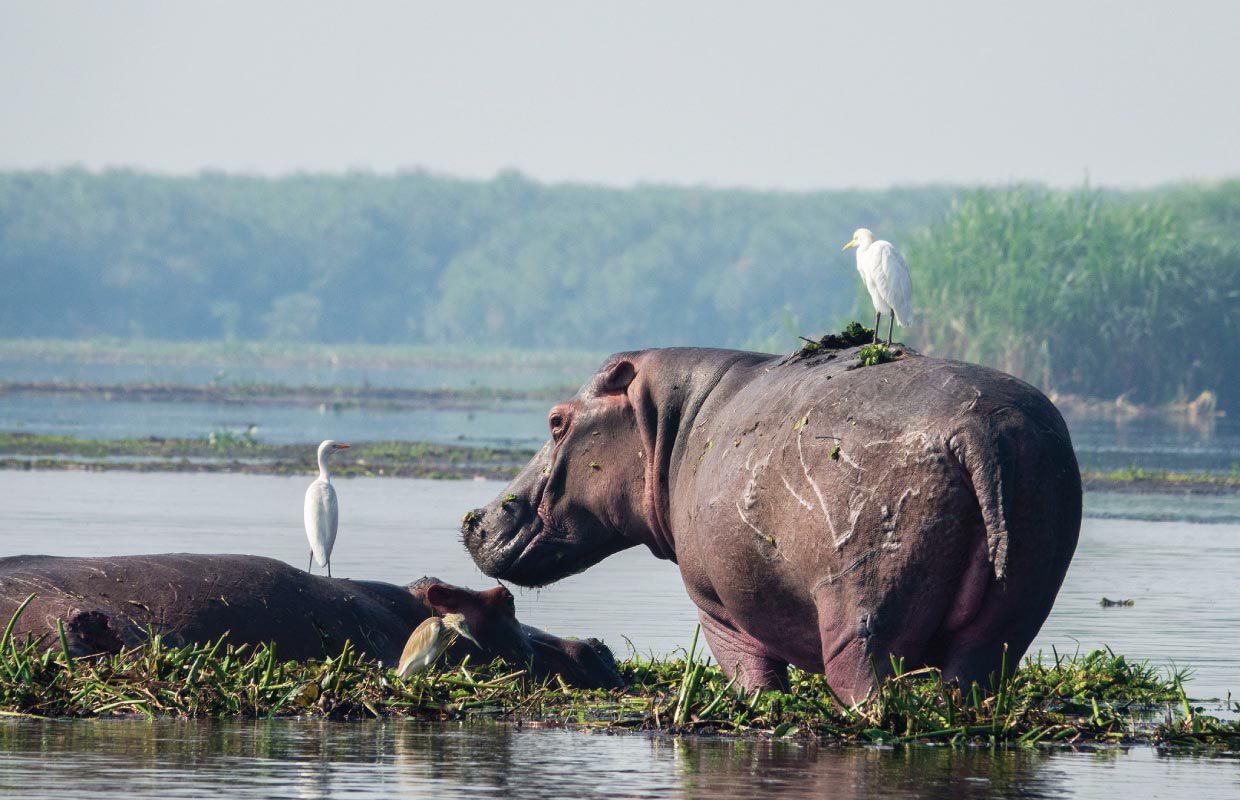Murchison Falls National Park in March: A Time of Transformation and Thrilling Encounters
Murchison Falls National Park, a jewel of Uganda’s wildlife heritage, undergoes a remarkable transformation in March. This month, poised at the cusp of the wet season, presents a dynamic interplay between lush renewal and active wildlife, creating a compelling environment for safari enthusiasts and nature lovers. Visitors during March are welcomed by a landscape rejuvenated by early rains, where the vibrancy of flora and fauna is intensified against the backdrop of the mighty Nile River carving its path through the park. This period offers a unique blend of challenges and rewards, making it an intriguing and memorable time to explore one of Africa’s most celebrated national parks.
Climate and Environmental Shifts: The Arrival of the Rains
March signals the gradual onset of the long rainy season in Murchison Falls National Park, bringing with it intermittent but increasingly frequent showers. Unlike the dry months preceding it, the climate during March is characterized by alternating spells of sunshine and rain, often in the form of afternoon downpours that invigorate the environment. Temperatures remain warm, fostering rapid growth in vegetation that had previously been subdued by the dry season.
This rainfall initiates a lush resurgence of grasses, shrubs, and trees throughout the park. The once golden savannah starts to regain its verdant hues, providing fresh grazing for herbivores and replenishing waterholes and rivers. The increased availability of water results in more dispersed animal movements compared to the dry season, as wildlife is no longer restricted solely to riverbanks and permanent water sources. The Murchison Falls itself becomes more dramatic, with heightened water flow adding to the visual and auditory spectacle for visitors fortunate enough to witness it during this time.
Wildlife Behavior and Viewing Patterns: Adaptation and Abundance
In March, wildlife within Murchison Falls National Park adjusts to the changing conditions brought by the rains. Many species benefit from the rejuvenated vegetation and expanded water availability, which support breeding and nurturing behaviors. Herbivores such as Uganda kobs, elephants, and buffaloes are observed grazing on fresh shoots and leaves, often moving across wider ranges than during the dry season.
Predators continue to maintain their territories and hunt actively, though animal sightings may be less predictable than in the drier months due to the wider dispersion of prey. This variability challenges safari participants to engage more deeply with the landscape, relying on the expertise of guides and trackers to locate elusive species and uncover hidden moments of wildlife interaction.
The birdlife experiences a notable increase in activity and diversity, as migratory species return and resident populations thrive in the richer habitat. Over 450 bird species inhabit the park, and March’s conditions promote excellent birding opportunities, especially during the clearer mornings before rains intensify. Waterbirds congregate near replenished water bodies, while forest and savannah birds exploit the abundance of insects and fruits, offering rewarding experiences for birdwatchers and photographers.
Safari Activities and Experiences: Embracing the Dynamic Season
Safari activities in Murchison Falls National Park during March are designed to maximize the benefits of the transitioning environment. Game drives continue to provide robust wildlife viewing opportunities, although the experience is adapted to account for the increased vegetation density and potentially muddy tracks. Guides are vigilant and skilled in navigating these conditions, ensuring that guests still enjoy rich and informative excursions.
Boat cruises along the Nile River remain a cornerstone of the safari experience, affording visitors intimate views of hippos, crocodiles, and riverine birdlife. The increased flow of the river during this time enhances the drama of the Murchison Falls spectacle, making these boat trips particularly memorable. Photography enthusiasts find the interplay of light and lush greenery ideal for capturing stunning images.
Guided nature walks gain renewed significance in March, as the park’s smaller creatures and plant species flourish in the wet conditions. These walks are both educational and immersive, allowing guests to explore the intricacies of the ecosystem and appreciate the delicate balance that sustains the park’s biodiversity. Cultural visits to nearby communities also remain integral, offering a holistic perspective that combines natural wonders with human heritage.
Why March Should Be Considered for Visiting Murchison Falls National Park
March offers a compelling combination of factors that make it a distinctive and worthwhile month to experience Murchison Falls National Park. The early rains rejuvenate the park’s landscapes, providing a visual feast of greenery and vitality that contrasts with the dryness of preceding months. This seasonal shift supports a surge in wildlife activity related to feeding and breeding, creating dynamic viewing opportunities that differ from the more concentrated sightings of the dry season.
While the intermittent rains require some flexibility and preparedness, they also bring refreshing relief from heat and dust, enhancing the overall comfort and ambiance of the safari. The relative quietness of the park during this period, with fewer visitors than in peak dry months, allows for more intimate and personalized encounters with nature. For travelers seeking a blend of adventure, photography, birding, and cultural interaction, March presents an optimal window that enriches the safari experience with a sense of renewal and discovery.
Plan Your March Safari with WildHorn Africa
Murchison Falls National Park in March embodies a period of transformation where nature’s rhythms and wildlife behaviors invite deeper engagement and appreciation. The park’s landscapes and inhabitants reveal new facets of their character under the influence of early rains, offering a unique safari experience that is both challenging and rewarding.
To fully embrace this exceptional time, booking Africa tours and safaris through WildHorn Africa is highly recommended. WildHorn Africa’s expertise, dedication to sustainable tourism, and commitment to personalized service ensure that every journey to Murchison Falls National Park is carefully curated for maximum impact and enjoyment. Entrust your March safari plans to WildHorn Africa and discover the magic of Uganda’s wilderness in its vibrant, renewed state.





 WildHorn Africa – Authentic and unforgettable tours across Africa, guided by local experts who know the land, wildlife, and culture best.
WildHorn Africa – Authentic and unforgettable tours across Africa, guided by local experts who know the land, wildlife, and culture best.


